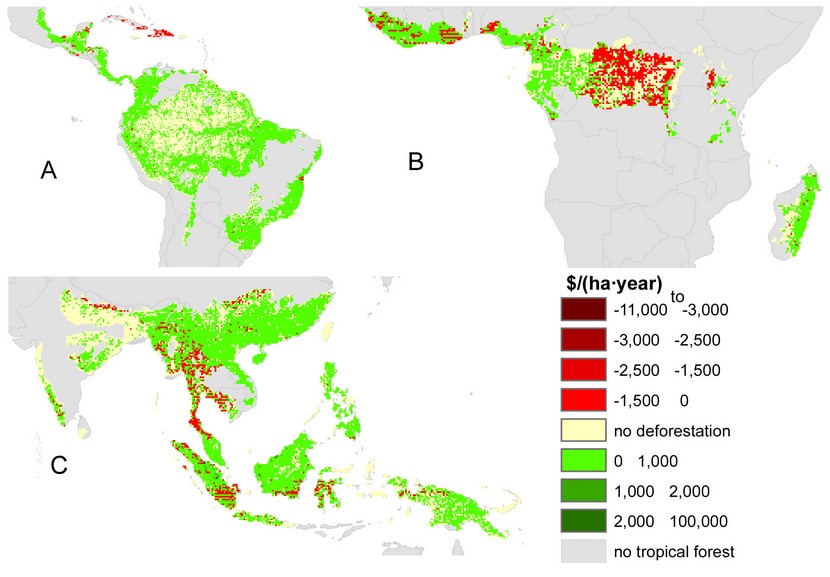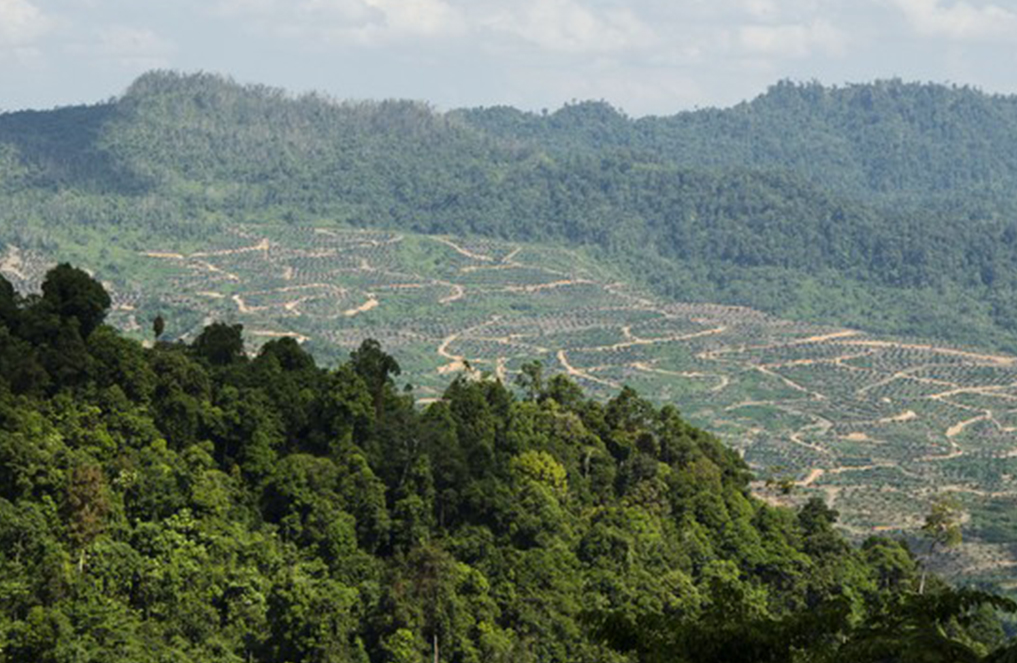Where to convert forests to tropical agriculture?
NUS researchers have found from a study that converting tropical forests to agricultural land may not make economic sense in most parts of the world.
Tropical forests are often destroyed to clear land for agriculture or to harvest forestry products, such as timber. When these forests are lost, there are costs to the environment due to the loss of ecosystem services. Much of this deforestation occurs with little understanding of the benefits and costs of such actions. NUS researchers have now estimated that the environmental damage caused by tropical deforestation from 2000 to 2012 amounts to future annual losses of US$107 to US$135 billion/year, while the gains by agriculture are much lower at US$32 to US$53 billion/year. Although at the aggregate level, tropical deforestation generates large economic losses, a study by Prof CARRASCO and his team from the Department of Biological Sciences, NUS found that large differences exist across different regions.
Studies estimating the trade-offs between the economic value of multiple forest ecosystem services and agricultural conversion have been largely constrained to local and national case studies. Analyses at the global level were lacking. By analysing the economic trade-offs between forests and agriculture, this study has identified the Atlantic Forest, areas around the Gulf of Guinea, and Thailand as potential areas in which the expected benefits from agricultural conversion are higher compared to the environmental costs (Figure 1). This might make it more difficult to implement biodiversity conservation strategies in these regions if they are based mainly on payments to farmers. By contrast, other regions such as Latin America, insular Southeast Asia and Madagascar present areas with low agricultural benefits but have high environmental costs (Figure 1).
Currently, there is insufficient knowledge on how the economic benefits and costs of deforestation vary on a global scale. Knowing which forested land, when converted to agriculture, provides the largest agricultural benefits with the lowest environmental costs can help to identify selected regions to focus biodiversity conservation efforts. This is important to balance the global agricultural demand for land and to conserve tropical forests and biodiversity. This study has identified strategies to enhance the sustainability of land-use policies in the tropics by providing information on regions which are more suitable to locate agriculture and which tropical forests to protect. “We have created the first global map of trade-offs between agriculture and the benefits provided by tropical forests,” says Prof Carrasco.
Future research could analyse the change in agricultural prices when land is converted to agricultural use, to provide a more complete picture on the effects on deforestation. “Strengthening the database on economic values provided by ecosystem services should also be a priority towards contributing to the sustainable development of our natural resources,” added Prof Carrasco.

Figure 1 shows the economic implications of deforestation in tropical forests from 2000 to 2012 in different parts of the world. Comparison of carbon emissions assessed at market prices plus loss of ecosystem services values minus gains of agricultural rents. Green colours indicate net losses generated from agricultural conversion. [Figure credits: L. R. Carrasco]

Figure 2 shows oil palm and tropical forests in Sabah, Malaysia. Oil palm is a crop with high revenues that can outcompete the benefits from forests in specific locations within Southeast Asia. [Photo credits: William S. SYMES]
Reference
LR Carrasco*; EL Webb; WS Symes; LP Koh*, NS Sodhi, “Global economic trade-offs between wild nature and tropical agriculture” PLOS BIOLOGY DOI: 10.1371/journal.pbio.2001657 Published: 2017.
